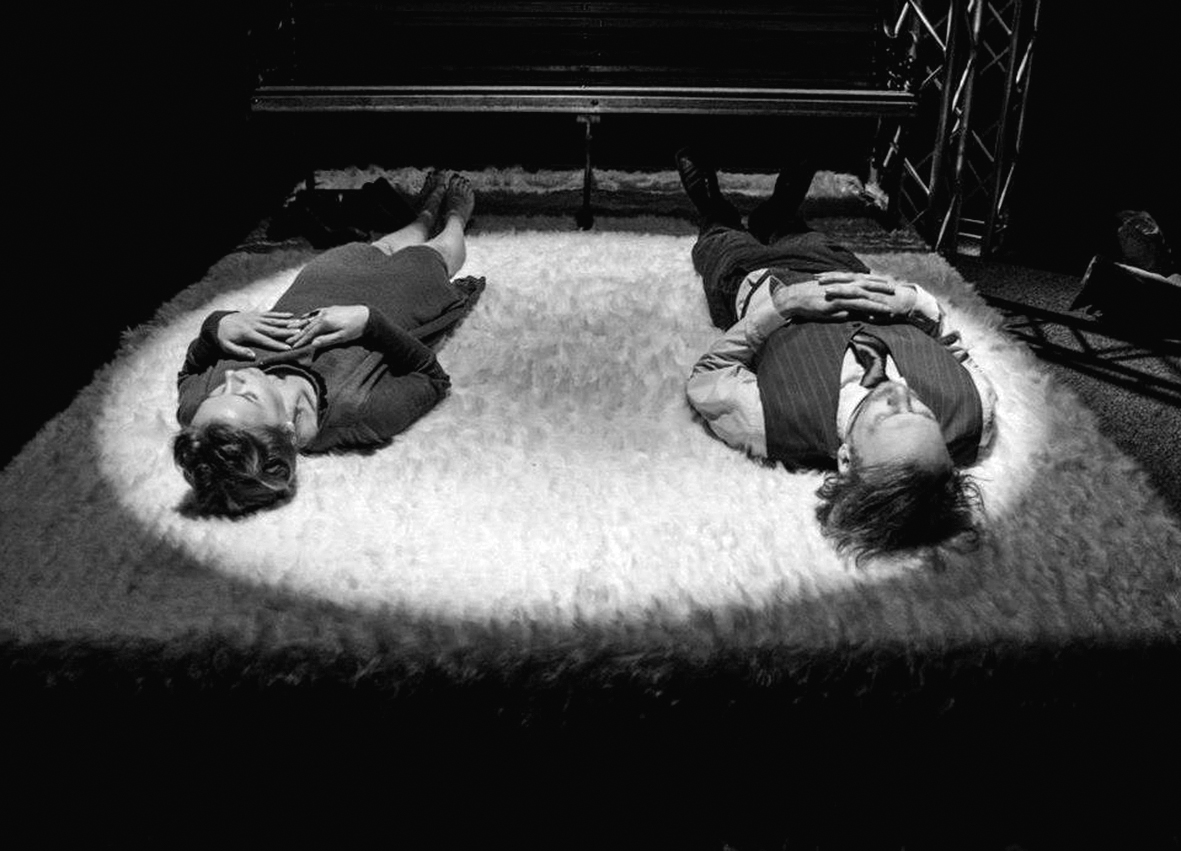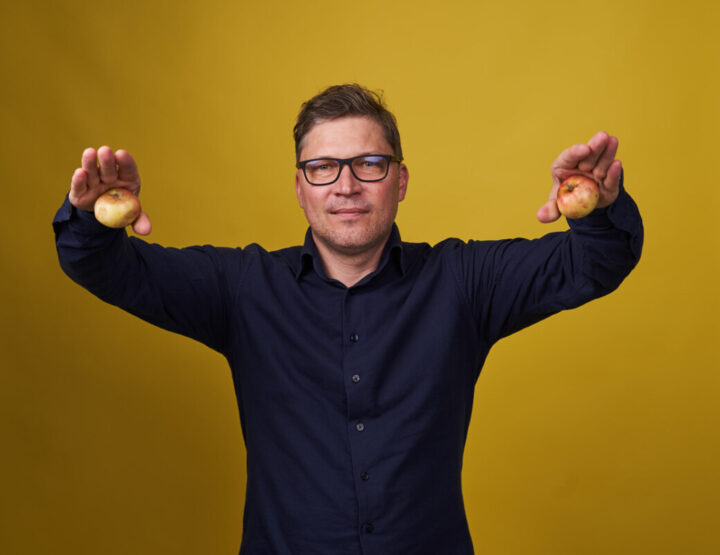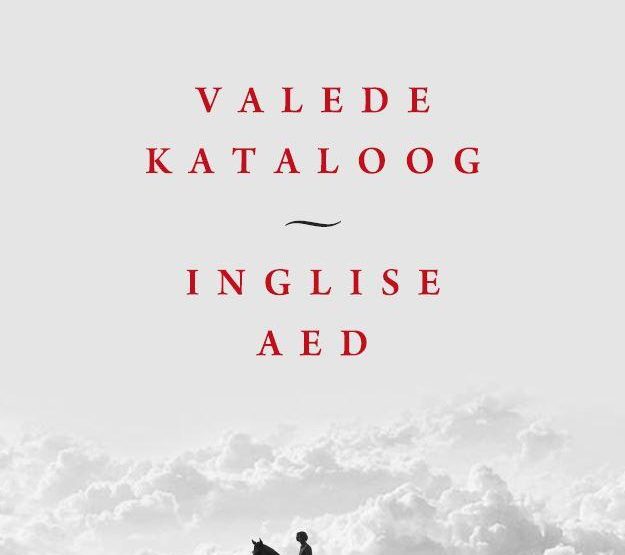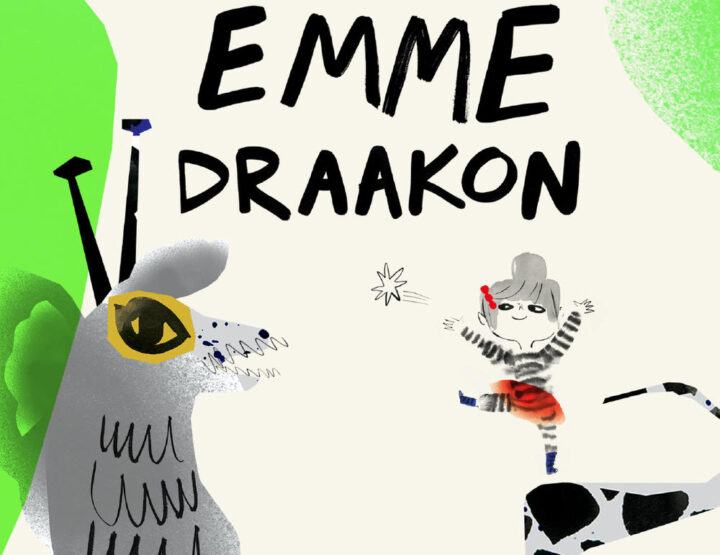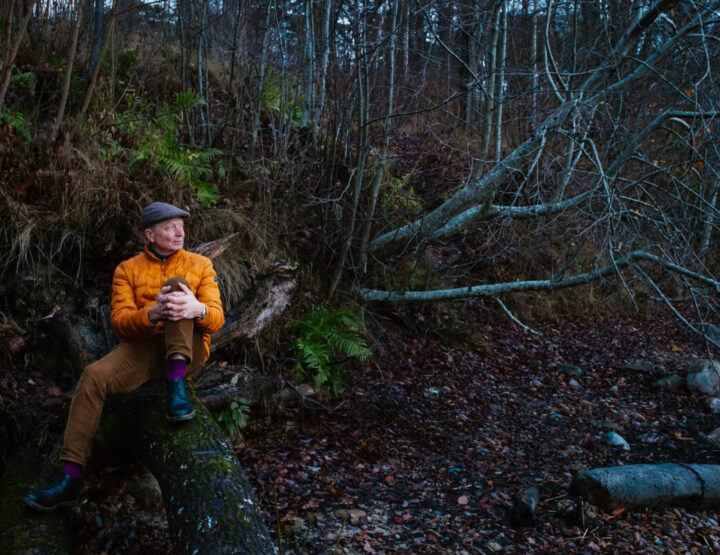Ten years ago was the one-hundredth anniversary of professional Estonian theatre. To celebrate the grand occasion, Pärnu’s Endla Theatre made the uncommon decision to that year only stage plays by Estonian authors. The proportion of Estonian drama in Estonian theatre repertoires has grown steadily over the years since (although certainly not as a direct result), and the leap that was taken then has today become normality. Ten years later, freshly-penned scripts by Estonian playwrights make up a solid one-third of repertoires, and often an even greater proportion.
Estonian playwrights are contemporary authors, for the most part – classical scripts are staged rarely. Skimming the list of plays that reached the stage in 2015, over one hundred were based on original Estonian drama. Appeals to the Estonian classics (such as A. H. Tammsaare, August Gailit, etc.) happened on fewer than ten occasions, and were done more to gain inspiration and break free of fixed translations than to merely re-stage well-known scripts.
Estonian playwrights are, for the most part, authors and directors focused solely on theatre. This was also confirmed by the Estonian Theatre Agency’s 2013 Play Competition, all five winners of which have direct connections to theatre. Exceptions to this general trend include Andrus Kivirähk, Mart Kivastik, and Urmas Vadi, all of whom have written prose as well as screenplays, children’s books, and radio plays, but have returned to stage drama time and again. While Kivirähk’s novels are rapidly crossing national boundaries at the present, the theatre works by this local author – who has been called the “grand young man” of Estonian drama – are still waiting to be discovered. Nevertheless, many of them have already been translated into English, Russian, German, and other languages (existing translations can be accessed at draamamaa.ee – the “Estonia, Land of Drama” web site). Kivirähk trusts actors as the carriers of his scripts to the audience, and takes special consideration of them when writing his texts. In his latest dramas, Kivirähk places two extreme characters in confrontation in an unexpected space, and gives them time to get comfortable in their acting. The characters’ forced meeting leads to friction between their personalities as well as comical outbursts. In Kivirähk’s play Kaheksa varbaga kuningas (The Eight-Toed King, 2011), he gives voice to a hospital orderly and an actor being treated for frostbitten toes. The night-time hospital becomes a stage, the patient a king, and the orderly an actor. Shakespeare’s King Lear is acted out between the two characters and complemented with commentaries, digressions, and slight adjustments – the human and superhuman interweave. In Kivirähk’s plays, real-life situations blur with references to the fantasy world, although his characters remain personable and close to the audience.
Summarising the year 2012 in drama, theatre critic Meelis Oidsalu found that contemporary Estonian plays stand out for their topicality, social- and political nature. There also exists an abundance of location-specific and folk-theatre texts, as well as meta-theatrical and cultural-mythological, semi-documentary dramas (Oidsalu, 2013). Analysing Estonian theatre a couple of years ago, Estonian Drama Theatre dramatist Ene Paaver highlighted the fact that several significant prosaists joined the local theatre scene all at once: Tiit Aleksejev, Indrek Hargla, Tõnu Õnnepalu, and Rein Raud. Among other points, Paaver asks what prosaists bring to playwriting. “I hope I am not being unjust, but it seems like it is the authors with a stricter writing school who bring richer language to theatre.” (Paaver, 2014) In addition to this point, Paaver draws attention to a number of individuals: Director of Tartu Uus Teater and theatre critic Ivar Põllu, whose latest plays have approached Estonia’s historical cultural greats from a novel angle; Eero Epner, who has an art degree, co-authors almost all of NO99 Theatre’s works with a sharp take on modern society, and has been awarded as both a theatre critic and a dramaturg; as well as trained actor Martin Algus.
Martin Algus is, at the moment, Estonia’s most highly-awarded playwright, having placed in the last three consecutive Estonian Theatre Agency Play Competitions. He is a freelance actor, translator, dramaturg, screenwriter, and playwright, who as of today has translated over twenty plays. His endeavour to find theatre works suitable for the Estonian stage by way of translation evolved into a desire to write plays himself – behind a human element of sadness in his scripts is always an important dose of humour and absurdity. In addition to winning an international award, Algus’ play Kontakt (Contact, 2010) received the Cultural Endowment of Estonia’s Award for Drama. The work speaks of distancing and encapsulation, as well as the need to establish contact with oneself, with others, and with life. Stories unfolding independently in cities along the Baltic are woven into a common sea, which separates its characters by way of reality at the same time as it connects them with poeticism. The family story Väävelmagnooliad (Sulphur Magnolias) won second place in the 2013 Estonian Theatre Agency’s Play Competition, and later also received the Estonian Theatre Union’s Award for Original Drama. In the work, Algus – who offers something new in terms of genre and form with every new play – crafted succinct, poetic, and metaphoric dialogue. The main character – a career woman applying for a better position – finds herself in a situation that leaves her with no choices. She is required to care for her invalid father, whom she remembers only by the childhood violence she endured. The story positions modern-day relationship patterns and forced family continuity eye-to-eye. Algus’ linguistically sparse dialogue melts with the realistic plot to form a poetic realism that keeps suspense running high.
It’s interesting to note that the nominees for Best Director of the Year, chosen by a jury of the Estonian Theatre Union, include a wealth of directors who chose local works as material for their plays. Estonian directors often personally write their scripts, or else a playwright undertakes the direction of his or her own play. Ever more often, Estonian theatre repertoires comprise works written by a group of authors assembled around the production. It is nearly impossible to thematically link the plays that have emerged as a result of group-work, since the impetus could be a specific, central problem that concerns the given director and troupe; the history of the site where it is staged; or an historical event and its interpretation – however, in all of these cases, one can remark the personalisation of topics and the shifting of characters closer to today. This can also certainly be explained by the younger average age of the authors, which begs the question: What is the path a contemporary Estonian playwright traverses to reach theatre? Currently, one can study playwriting intensively at the Estonian Music and Theatre Academy’s (EMTA) Drama School by majoring in dramaturgy, as well as at the private Drakadeemia, which offers courses in creative writing. In addition, young playwrights have a good opportunity to present their plays to the public through the biennial Estonian Theatre Agency Play Competition, to which almost three hundred scripts have been submitted over the last five years.
Although the majority of Estonian playwrights are men (and this is not only prevalent in the theatre scene), the 2015 Play Competition showed a shift in this tend, with all five awarded playwrights being female. In 2011, Piret Jaaks – a student at Drakadeemia who recently received an award for best debut work with her short prose collection Linnalegend (Urban Legend) – won 1st place in the Play Competition with her work Näha roosat elevanti (To See Pink Elephants). The relationship story closely and delicately guards a secret until almost the final, surprising scenes. Perhaps only the play’s third character – Katriin – knows the answers to whether the two main characters’ (Levi and Simona’s) cohabitation is just what it seems to be, and why it can never actually end. The love-triangle is resolved only when Levi and Katriin’s child enters their increasingly agonising world and they must shed the dream-like tortures of their past in the name of its future – both acknowledging the truth and shattering the identity-game that lasted until then. Mari-Liis Lille, who studied acting at the EMTA Drama School, and Paavo Piik, who majored in dramaturgy at the same institution, joint-authored the documentary plays Varesele valu… (Magick Mend…) and Harakale haigus (Candle Burn) in 2014, which were then staged in two different theatres simultaneously. Implemented in the two plays, which comprise a series of monologues, were twenty-one interviews done with young people who have all grown up in a free Estonia, and who have all personally suffered and also recovered from the illness diagnosed as depression – an illness, which is estimated to affect one-sixth of Estonia’s population. Delving into the subjects’ life-stories, the directors ask why the percentage of those suffering from depression has grown in Estonia over time despite the rising standard of living, and also show opportunities for how to triumph over the disease. These moving stories, which are liberating in retrospect, call on the observer to notice and to understand.
The last decade of Estonian drama is strongly interspersed with histories and personal stories, as well as experimentation with the boundary between reality and imagination. Almost a third of scripts that reached the stage over the last few years handle documentary materials, including both glimpses into the past and critical contemporary plays. The documentary play 45 339 km² raba (45,339 km² of Bogs) by EMTA Drama School dramaturgy graduate Andra Teede was staged in late 2015. Whereas Teede’s play Estoplast. Näidend valguse tegemisest (Estoplast. A Play About Making Illumination) – which was awarded in the ETA Play Competition – presented stories based on interviews done with workers at a Soviet-era lamp factory, skilfully interweaving the everyday with poeticism, the real with the abstract, and nostalgia with criticism, in 45 339 km² raba, the materials used were statistics on and interviews done with Estonians who have emigrated. The play, named after the country’s total area, poses painfully personal questions about the location of “home” for an Estonian living outside of Estonia, and asks what things cannot be taken away but remain important even when one is gone. These things are hardly likely to be power-hungry politicians or the chilly climate, but rather something totally unique – like Estonian theatre as a whole.
Sources:
Oidsalu, Meelis 2013. Kultuurimõnu voogudes. Eesti algupärane näitekirjandus aastal 2012 – Looming no 5, pp 717–724.
Paaver, Ene 2014. 2013. aasta eesti dramaturgiast – Looming no 5, pp 675–687.
Heidi Aadma (1976) is a drama researcher and critic. She is a dramaturge with the Estonian Theatre Agency and has compiled a number of works on theatre.

